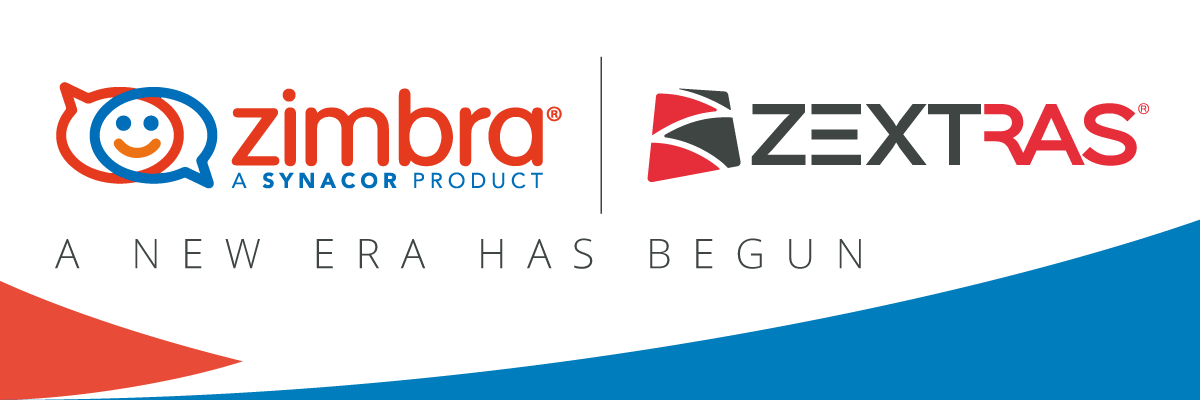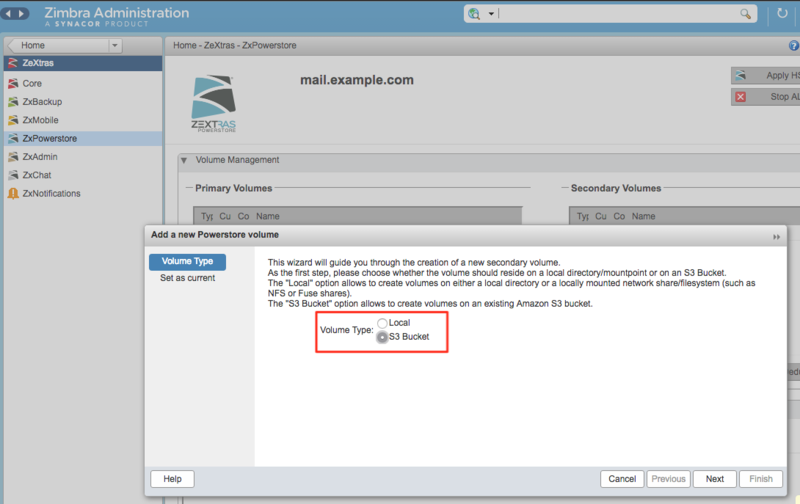Scaling Zimbra Collaboration Suite
One of the main tasks for business is growth and development. In today's realities, an increase in the number of production premises, as well as the emergence of new employees and contractors, implies a constant increase in the burden on the IT infrastructure of the enterprise. That is why when implementing any solution, the IT manager of an enterprise needs to take into account its characteristics such as scalability. Being able to handle a large workload when adding large computational loads is especially critical for an ISP. Let's see what opportunities for scaling offers Zimbra Collaboration Suite, as a product used by various SaaS-providers around the world.

Scalability is of two types: vertical and horizontal. In the first case, the performance gains of the solution are achieved by adding computational and other capacities to the already existing IT infrastructure nodes, and in the second, productivity gains are achieved by adding new computing nodes, which take on some of the load. Zimbra Collabration Suite supports both horizontal and vertical scaling.
Vertical scaling if you decide to add computing power to your server will be little different from migrating to a new, more powerful server from Zimbra. However, if you decide to add secondary storage for email to the server, you will definitely encounter a restriction laid down in the Zimbra Open-Source Edition. The fact is that in the free version of Zimbra you cannot connect secondary volumes to store email. To solve this issue for users of the free edition of Zimbra, Zextras PowerStore extension is designed, which allows you to connect both physical and cloud S3 secondary storages to the server. In addition, PowerStore includes compression and deduplication algorithms in Zimbra that can improve the efficiency of data storage on existing media.
')
The creation of secondary volumes among ISPs, which make primary storage fast but expensive SSDs, and secondary ones placed on slow but cheaper HDDs, is especially in demand. Due to the use of transparent links that are stored on the SSD, the system continues to work quite quickly, and due to compression and deduplication, each server can store many more emails. As a result, the cost-effectiveness of servers with secondary storage and Zextras PowerStore is significantly higher than with standard Zimbra OSE functionality.

Horizontal scaling, by definition, can only be used in a multiserver infrastructure. Since during a multi-server installation, all Zimbra modules are separated into different machines, the administrator will be able to add to almost infinity all new and new LDAP Replica, MTA and Proxy servers, and also mail storages.
The process of adding new nodes repeats the process described in one of our previous articles on the Zimbra multiserver installation. Simply install the necessary Zimbra modules on the server and specify the Master LDAP address, as well as enter the data for authentication. After that, the new nodes will become part of the Zimbra infrastructure, and the Zimbra Proxy will provide load balancing between servers. In this case, all previously created mailboxes and their contents remain in the repositories where they were before.
Usually, new mail storages are added to the Zimbra infrastructure, at the rate of one server for 2500 active users of the Zimbra web client and up to 5-6 thousand users of desktop and mobile email clients. Such a number of users allows you to achieve the most responsive server operation and avoid problems with availability and long load times.
In addition, administrators of the multi-server infrastructure also have access to secondary storage, as well as compression and deduplication to each e-mail storage using Zextras PowerStore. Using this zimlet saves up to 50% of disk space, and together with an increase in the economic efficiency of the entire infrastructure. In the case of large ISPs, the economic effect of such infrastructure optimization can reach really large values.

Scalability is of two types: vertical and horizontal. In the first case, the performance gains of the solution are achieved by adding computational and other capacities to the already existing IT infrastructure nodes, and in the second, productivity gains are achieved by adding new computing nodes, which take on some of the load. Zimbra Collabration Suite supports both horizontal and vertical scaling.
Vertical scaling if you decide to add computing power to your server will be little different from migrating to a new, more powerful server from Zimbra. However, if you decide to add secondary storage for email to the server, you will definitely encounter a restriction laid down in the Zimbra Open-Source Edition. The fact is that in the free version of Zimbra you cannot connect secondary volumes to store email. To solve this issue for users of the free edition of Zimbra, Zextras PowerStore extension is designed, which allows you to connect both physical and cloud S3 secondary storages to the server. In addition, PowerStore includes compression and deduplication algorithms in Zimbra that can improve the efficiency of data storage on existing media.
')
The creation of secondary volumes among ISPs, which make primary storage fast but expensive SSDs, and secondary ones placed on slow but cheaper HDDs, is especially in demand. Due to the use of transparent links that are stored on the SSD, the system continues to work quite quickly, and due to compression and deduplication, each server can store many more emails. As a result, the cost-effectiveness of servers with secondary storage and Zextras PowerStore is significantly higher than with standard Zimbra OSE functionality.

Horizontal scaling, by definition, can only be used in a multiserver infrastructure. Since during a multi-server installation, all Zimbra modules are separated into different machines, the administrator will be able to add to almost infinity all new and new LDAP Replica, MTA and Proxy servers, and also mail storages.
The process of adding new nodes repeats the process described in one of our previous articles on the Zimbra multiserver installation. Simply install the necessary Zimbra modules on the server and specify the Master LDAP address, as well as enter the data for authentication. After that, the new nodes will become part of the Zimbra infrastructure, and the Zimbra Proxy will provide load balancing between servers. In this case, all previously created mailboxes and their contents remain in the repositories where they were before.
Usually, new mail storages are added to the Zimbra infrastructure, at the rate of one server for 2500 active users of the Zimbra web client and up to 5-6 thousand users of desktop and mobile email clients. Such a number of users allows you to achieve the most responsive server operation and avoid problems with availability and long load times.
In addition, administrators of the multi-server infrastructure also have access to secondary storage, as well as compression and deduplication to each e-mail storage using Zextras PowerStore. Using this zimlet saves up to 50% of disk space, and together with an increase in the economic efficiency of the entire infrastructure. In the case of large ISPs, the economic effect of such infrastructure optimization can reach really large values.
Source: https://habr.com/ru/post/446434/
All Articles